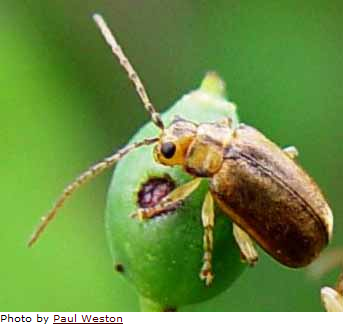Landis Arboretum, high on a hilltop above the Village of Esperance in Schoharie County, is the best place to see New York’s native trees, shrubs, and vines thanks to the hard work of Ed Miller, volunteer curator of the native plant collection. At last count, Ed had planted well over 200 species, omitting noxious, alpine, and rare and endangered plants as well as many from the coastal plain that wouldn’t grow well there. Even so, there are species like tupelo, red bud, cucumber magnolia, and persimmon that seem to be doing well and the warming climate doesn’t hurt either. Some northern species like bog birch and balsam popular are doing well too. Not all species thrive the first time and some have had to be replanted like the sweet birches and witch hobble.

The garden's Willow Pond Trail leads to Ed's Native Plant Collection. This visit took place in early December 2011.
Following a lead from Kew Gardens in England, they planted each species with its family members. This makes it possible for serious students to easily compare the details of closely related plants. For instance, all 12 species of native oaks are in one area, all six species of maple in another, and all five birches in still another. Other families are similarly grouped.

This area is where all the members of the sumac family can be found.
Since not all plants of the same family like the same conditions, there are areas that feature plants that like the same habitat, like sun, shade and wetlands. Many of the planting areas have mailboxes that contain a laminated map showing where each species is planted. The other side of the map tells something about the family or the local habitat.

Ed pulls a map from one of the discovery mailboxes in the open sunny habitat.
One of the most popular sites along the the native plant trail is the Bog Garden. It provides a home for trees and shrubs of northern acid bogs and its log structure can be seen from the Landis barn as you approach from the main entrance. Its a great chance to see these plants up close from a habitat that is often difficult to access.

From the barn, head east to the wooden bog garden. You may find Ed there to greet you!
Now is a great time to visit the garden to see the early flowers of many of the woodies, especially the overlooked wind-pollinated trees. The native plant trail is an excellent teaching tool and an invaluable resource for learning the woody plants of New York. Come visit soon!

In this area you will find the native dogwoods grouped together.
Another good time to visit will be the spring book and plant sale on May 19th, 10am to 4pm. See their website calendar for details.














